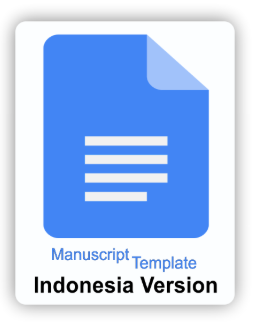Teaching Indonesian as a foreign language through Small Private Online Course (SPOC): investigating learners' multidimensional anxiety in online learning
DOI:
https://doi.org/10.21831/ep.v1i2.34995Abstract
One of the foreign language learners challenges is the anxious level they mostly face while learning a new language. Even though Foreign Language Anxiety (FLA) has been analyzed for decades to foresee language learners' challenges in the learning process, the previous results only focus on single language skills and the offline learning environment. In consideration, learning a foreign language is supposed to be a multidimensional analysis and forced to be online due to the current pandemic. Thus, this study investigates how Taiwanese learners face FLA when learning Indonesian as A Foreign Language (IFL) through Small Private Online Course (SPOC). Participants were assessed by Multimedimensional Language Anxiety Scale (MLAS) at the end of their six-months course. The results showed that writing was the highest anxiety while reading was the lowest anxiety. The psychology domain that showed the learners tension during learning IFL through SPOC revealed the most highly anxious. Surprisingly, nearly two-thirds of learners were considered overall moderate-level anxiety by using SPOC as a learning platform. In further investigation, male learners dominated each foreign language skills and domains' anxiety level compared to female learners. The correlations among language skills and domains are presented and critically discussed. Finally, it opens more opportunities to explore SPOC and another online learning platform to reduce learners' FLAsReferences
Atas, M. (2015). The reduction of speaking anxiety in EFL learners through drama techniques. Procedia-Social and Behavioral Sciences, 176, 961-969.
Aydın, S. (2018). Technology and foreign language anxiety: Implications for practice and future research. Dil ve Dilbilimi í‡alışmaları Dergisi, 14(2), 193-211.
Blau, A. (1955). A unitary hypothesis of emotion: I. Anxiety, emotions of displeasure, and affective disorders. The Psychoanalytic Quarterly, 24(1), 75-103.
í‡aÄŸatay, S. (2015). Examining EFL students' foreign language speaking anxiety: The case at a Turkish state university. Procedia-Social and Behavioral Sciences, 199, 648-656.
De Costa, P. I. (2015). Reenvisioning language anxiety in the globalized classroom through a social imaginary lens. Language Learning, 65(3), 504-532.
Dí¶rnyei, Z., & Ryan, S. (2015). The psychology of the language learner revisited. Routledge.
Fox, A. (2013). From MOOCS to SPOCS. Communications of the ACM, 56(12), 38-40.
Fox, A., Patterson, D. A., Ilson, R., Joseph, S., Walcott-Justice, K., & Williams, R. (2014). Software engineering curriculum technology transfer: lessons learned from MOOCs and SPOCs. UC Berkeley EECS Technical Report.
Frantzen, D. (2014). Is technology a one-size-fits-all solution to improving student performance? A comparison of online, hybrid and face-to-face courses. Journal of Public Affairs Education, 20(4), 565-578.
Godwin-jones, R. (2005). Skype and podcasting: Disruptive technologies for language learning. Language learning & technology, 9(3), 9-12.
Guo, P. (2017). MOOC and SPOC, which one is better?. Eurasia Journal of Mathematics, Science and Technology Education, 13(8), 5961-5967.
HamzaoÄŸlu, H., & Koí§oÄŸlu, Z. (2016). The application of podcasting as an instructional tool to improve Turkish EFL learners' speaking anxiety. Educational Media International, 53(4), 313-326.
Heckel, C., & Ringeisen, T. (2019). Pride and anxiety in online learning environments: Achievement emotions as mediators between learners' characteristics and learning outcomes. Journal of Computer Assisted Learning, 35(5), 667-677.
Horwitz, E. K. (2010). Foreign and second language anxiety. Language Teaching, 43(2), 154.
Horwitz, E. K., Horwitz, M. B., & Cope, J. (1986). Foreign language classroom anxiety. The Modern language journal, 70(2), 125-132.
Jong, J. P. (2016). The effect of a blended collaborative learning environment in a small private online course (SPOC): A comparison with a lecture course. Journal of Baltic Science Education, 15(2), 194.
Kurniasih, D., & Isnaniah, S. (2019). Penerapan Bahan Ajar Bahasa Indonesia bagi Penutur Asing (BIPA) "Sahabatku Indonesia" Tingkat Dasar di IAIN Surakarta. Jurnal Bahasa Indonesia Bagi Penutur Asing (JBIPA), 1(2), 62. https://doi.org/10.26499/jbipa.v1i2.1793
Kusmiatun, A., Suyitno, I., HS, W., & Basuki, I. A. (2017). Identifying features of Indonesian for speakers of other languages (BIPA) learning for academic purposes. International Journal of Social Sciences & Educational Studies, 3(4), 197.
Kutuk, G., Putwain, D. W., Kaye, L., & Garrett, B. (2019). Development and Validation of a New Multidimensional Language Class Anxiety Scale. Journal of Psychoeducational Assessment, 38(5), 649-658.
Liao, G. (2017). Teachers of Vietnamese and Indonesian languages to be in greater demand in Taiwan | Taiwan News. Retrieved January 6, 2020, from https://www.taiwannews.com.tw/en/news/3174536
Liao, H. C., & Wang, Y. H. (2018). Using comprehension strategies for students' self-efficacy, anxiety, and proficiency in reading English as a foreign language. Social Behavior and Personality: an international journal, 46(3), 447-458.
Mills, N., Pajares, F., & Herron, C. (2006). A reevaluation of the role of anxiety: Self"efficacy, anxiety, and their relation to reading and listening proficiency. Foreign language annals, 39(2), 276-295.
Murtianis, M., Andayani, A., & Rohmadi, M. (2019). Text Book As a Java Culture Recognıtıon Medıa in Indonesıan Learnıng For Foreıgn Speaker (BIPA) in Sebelas Maret University. International Journal of Educational Research Review, 4(3), 427-434.
Piniel, K., & Albert, í. (2018). Piniel, K., & Albert, í. (2018). Advanced learners' foreign language-related emotions across the four skills. Studies in Second Language Learning and Teaching, 8(1).
Qashoa, S. H. H. (2014). English writing anxiety: Alleviating strategies. Procedia-Social and Behavioral Sciences, 136, 59-65.
Ra, J., & Rhee, K. J. (2018). Detection of Gender related DIF in the Foreign Language Classroom Anxiety Scale. Educational Sciences: Theory & Practice, 18(1).
Ramadhani, R., Hs, W., & Harsiati, T. (2016). Pengembangan bahan ajar keterampilan berbicara bahasa Indonesia bagi penutur asing tingkat pemula. Jurnal Pendidikan: Teori, Penelitian, dan Pengembangan, 1(3), 326-337.
Razak, N. A., Yassin, A. A., & Mohamad Maasum, T. N. R. B. T. (2017). Effect of Foreign Language Anxiety on Gender and Academic Achievement among Yemeni University EFL Students. English Language Teaching, 10(2), 73-85.
Saddhono, K., & Erwinsyah, H. (2018). Folklore As Local Wisdom for Teaching Materialsin Bipa Program (Indonesian for Foreign Speakers). KnE Social Sciences, 444-454.
Setiawan, A. M. N., Andayani, A., & Saddhono, K. (2017). The Use of Writing Learning Media For Bipa Students To Understand Local Culture. Komposisi: Jurnal Pendidikan Bahasa, Sastra, dan Seni, 18(1), 66-79.
Sinnasamy, J., & Karim, N. H. A. (2015). Academic related anxieties: A case study investigating the relationships among library, communication and language anxieties among non-native speakers of English. Malaysian Journal of Library & Information Science, 20(2).
Soffer, T., & Nachmias, R. (2018). Effectiveness of learning in online academic courses compared with face"to"face courses in higher education. Journal of Computer Assisted Learning, 34(5), 534-543.
Suyitno, I., Susanto, G., Kamal, M., & Fawzi, A. (2018). Cognitive Learning Strategy of BIPA Students in Learning the Indonesian Language. IAFOR Journal of Language Learning, 3(2), 175-190.
Warschauer, M., & Healey, D. (1998). Computers and language learning: An overview. Language teaching, 31(2), 57-71.
Yalí§Ä±n, í–., & Ä°nceí§ay, V. (2014). Foreign language speaking anxiety: The case of spontaneous speaking activities. Procedia-Social and Behavioral Sciences, 116, 2620-2624.
Yang, J. C., & Quadir, B. (2018). Effects of prior knowledge on learning performance and anxiety in an English learning online role-playing game. Journal of Educational Technology & Society, 21(3), 174-185.
Zhao, A., Guo, Y., & Dynia, J. (2013). Foreign language reading anxiety: Chinese as a foreign language in the United States. The Modern Language Journal, 97(3), 764-778.
Downloads
Published
How to Cite
Issue
Section
License
Epistema allows readers to read, download, copy, distribute, print, search, or link to its articles' full texts and allows readers to use them for any other lawful purpose. The journal allows the author(s) to hold the copyright without restrictions. Finally, the journal allows the author(s) to retain publishing rights without restrictions
- Authors are allowed to archive their submitted articles in an open access repository
- Authors are allowed to archive the final published article in an open access repository with an acknowledgment of its initial publication in this journal

This work is licensed under a Creative Commons Attribution-ShareAlike 4.0 Generic License.











